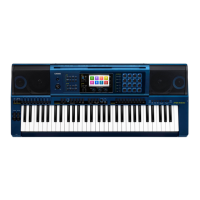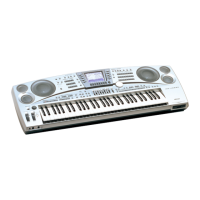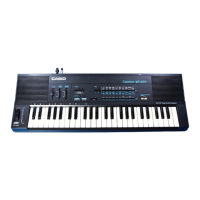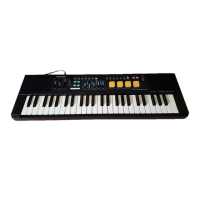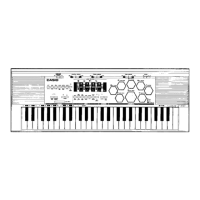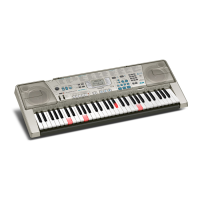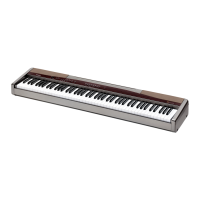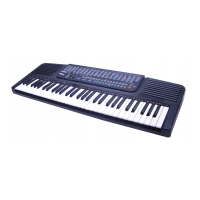EN-14
Editing a Tone (User Tones)
Velocity Range Low Velocity range low. Specifies the minimum value of the effective velocity.
No sound is produced when playing at a velocity less than this setting.
0 to 127
Velocity Range High Velocity range high. Specifies the maximum value of the effective
velocity. No sound is produced when playing at a velocity greater than
this setting.
0 to 127
Start Trigger Start trigger. Specifies whether a note is sounded when a keyboard key is
pressed (KeyOn) or when a keyboard key is released (KeyOff).
KeyOn, KeyOff
Pitch Pitch envelope.
• For details about the setting items below, see the melody tone “Pitch
Envelope” (page EN-7).
Octave Shift
• For details about the setting items below, see drum tone “Pitch
Envelope” (page EN-11).
Coarse Tune, Fine Tune
Envelope • For details about the setting items below, see the melody tone “Pitch
Envelope” (page EN-7). You can input “Initial Level”, “Attack Level”,
and “Release Level” values in the range of –256 to 0 to +255. You can
input “Attack Time”, “Decay Time”, and “Release Time” values in the
range of 0 to 127.
Initial Level, Attack Time, Release Time, Release Level
• For details about the setting items below, see the melody tone “Filter”
(page EN-8). You can input “Attack Level” and “Decay Level” values
in the range of –256 to 0 to +255. You can input a “Decay Time” in the
range of 0 to 127.
Attack Level, Decay Time, Decay Level
Key Follow Key follow. Adjusts the amount of pitch change between neighboring
keyboard keys. A higher value represents greater change.
–128 to 0 to +127
Key Follow Base Key follow base. Keyboard key that is the center of key follow. C-1 - G9
Split Shift Split shift. Counting from the keyboard key that is pressed, the waveform
that sounds is the one assigned to the keyboard key that is the specified
split shift amount above or below the pressed key. The pitch used is the
one that corresponds to the pressed keyboard key.
–12 to 0 to +12
LFO Layer Depth LFO layer depth. Adjusts how LFO is applied to each layer. 0 to 127
Filter Filter.
• For details and information about the setting items below, see the
melody tone “Filter” (page EN-8). You can input a value in the range
from 0 to 127.
Cutoff, Resonance
Filter Type Filter type. Specifies the range cut by the filter.
LPF1: 6dB/oct filter for low-frequency band components. No resonance
effect. Suitable for acoustic instruments.
LPF2: 12dB/oct filter for low-frequency band components. No
resonance effect. Suitable for acoustic instruments.
LPF3: 12dB/oct filter for low-frequency band components. With
resonance effect. Suitable for synthesized tones.
BPF: 6dB/oct filter for band components in the vicinity of the cutoff
frequency. With resonance effect.
HPF: 12dB/oct filter for high-frequency band components. With
resonance effect.
Refer to the cell to the
left.
Velocity Sense Velocity sense. Specifies the degree of change in the filter in accordance
with keyboard press velocity.
–64 to 0 to +63
Display Name Description Settings
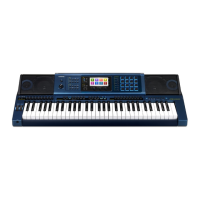
